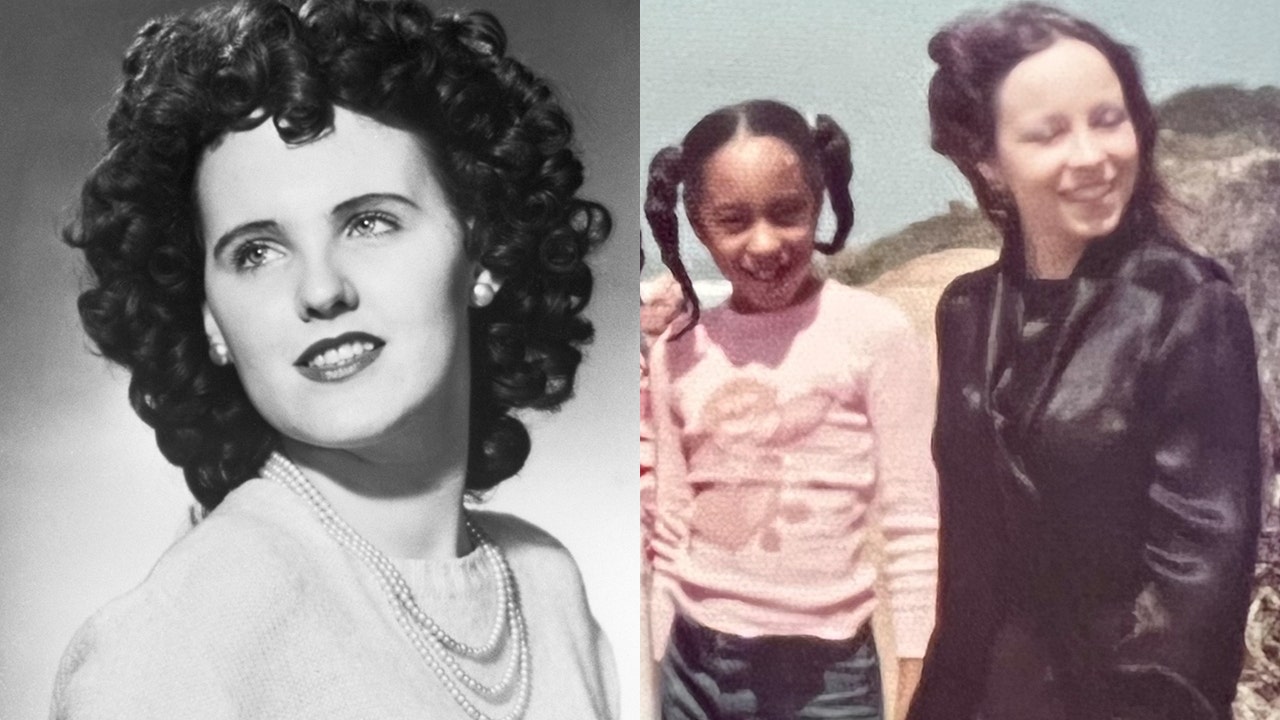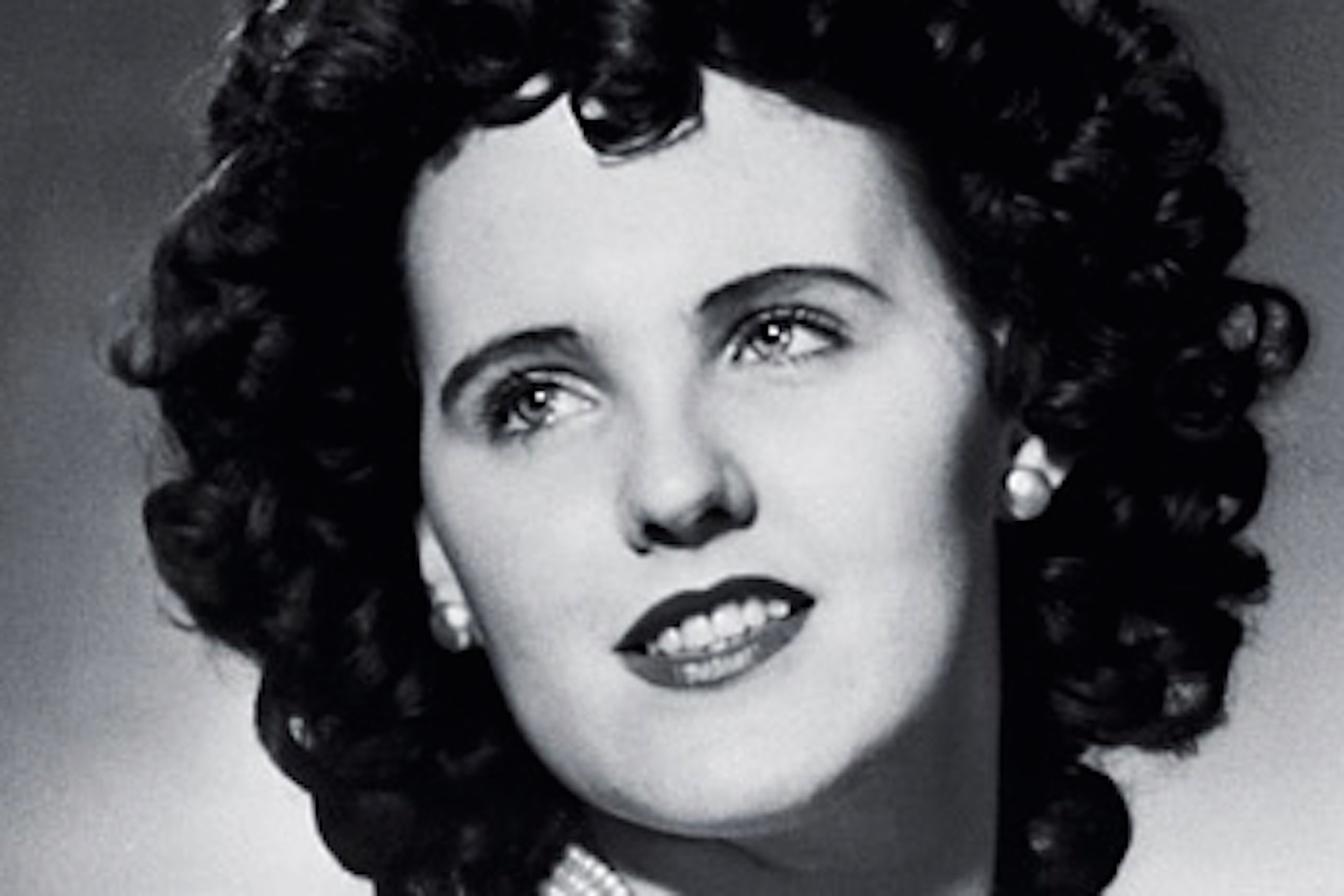The Black Dahlia case remains one of the most infamous and unsolved crimes in American history. The murder of Elizabeth Short, known posthumously as the "Black Dahlia," captivated the public's attention due to its brutal nature and the mysterious circumstances surrounding her death. The crime scene photos of the Black Dahlia have become symbolic of the enigma that surrounds this tragic event.
On January 15, 1947, the body of Elizabeth Short was discovered in a vacant lot in Leimert Park, Los Angeles. Her death was both shocking and gruesome, leaving investigators baffled and the public in a state of disbelief. The nickname "Black Dahlia" was coined by reporters covering the case, inspired by the movie "The Blue Dahlia" and the dark nature of the crime itself.
This article will delve into the chilling details of the Black Dahlia photos crime, exploring the historical context, evidence, suspects, and the lasting impact on true crime enthusiasts and the justice system. Let us uncover the layers of this haunting mystery together.
- Hdhub4u Your Ultimate Destination To Download Bollywood Amp Hollywood Movies In Hindi
- 2025 Kannada Movies Movierulz What You Need To Know And Alternatives
- Aditi Mistry Nipple Slip The Viral Incident Controversy Explained
- Movierulz 2025 Latest Movies News You Need To Know
- Michael Consuelos Married The Ultimate Guide To His Love Life Career And Family
Table of Contents
- Biography of Elizabeth Short
- Crime Scene Details
- Black Dahlia Photos: What They Reveal
- Key Suspects in the Black Dahlia Case
- The Investigation Process
- Analysis of Evidence
- Impact on Society and True Crime
- The Legacy of the Black Dahlia
- Why the Case Remains Unsolved
- Conclusion
Biography of Elizabeth Short
Early Life and Background
Elizabeth Short, born on July 29, 1924, in Boston, Massachusetts, was the second of five daughters in her family. Her father abandoned the family during the Great Depression, which left a lasting impact on her childhood. Elizabeth moved frequently with her mother and siblings, eventually settling in Florida during her teenage years.
Below is a summary of Elizabeth Short's personal details:
| Full Name | Elizabeth Short |
|---|---|
| Nickname | Black Dahlia |
| Date of Birth | July 29, 1924 |
| Place of Birth | Boston, Massachusetts |
| Date of Death | January 15, 1947 |
| Cause of Death | Murder |
Elizabeth's life was marked by a series of relocations and brief relationships. She was known for her striking beauty, which earned her the nickname "Black Dahlia" after her death. Her aspirations of becoming an actress led her to Los Angeles, where she worked odd jobs while pursuing her dreams.
- Unlock Secrets To Viral Content Seo Success With Viralkandcom
- Honeytoons Teach Me First More Explore Webtoons Comics
- Discover Exclusive 18 Hollywood Movies At Vegamovies
- Filmyfly Com Web Series Your Ultimate Destination For Latest Entertainment
- Filmyfly 2025 Latest Movies Streaming News Watch Now And Stay Updated
Crime Scene Details
The discovery of Elizabeth Short's body in a vacant lot on January 15, 1947, shocked the nation. The Black Dahlia photos crime scene revealed a brutal murder, with Elizabeth's body found severed at the waist and arranged in a grotesque pose. The crime scene was meticulously documented through photographs, which have since become an integral part of the investigation.
Key Observations from the Crime Scene
- The body was found in a vacant lot, partially naked and arranged in a bizarre manner.
- Elizabeth's face had been slashed from ear to ear, creating a grotesque "Glasgow smile."
- Her body was washed clean, suggesting the killer had taken time to prepare the scene.
- There were no signs of a struggle, indicating that Elizabeth may have been incapacitated before her death.
These chilling details have fueled speculation and theories about the killer's motives and identity. The crime scene photos remain some of the most haunting images in the annals of true crime history.
Black Dahlia Photos: What They Reveal
The Black Dahlia photos crime scene images have become iconic symbols of the case. These photographs provide critical insights into the crime, capturing the brutality and meticulous planning of the killer. Experts have analyzed these images extensively, attempting to uncover clues that might lead to the identity of the murderer.
Significance of the Photos
- The arrangement of the body suggests a level of control and obsession on the part of the killer.
- Forensic experts have studied the photos to determine the time of death and the methods used by the killer.
- Public fascination with the photos has kept the case alive in popular culture, inspiring books, films, and documentaries.
While the photos are disturbing, they remain invaluable tools in the ongoing quest for justice for Elizabeth Short.
Key Suspects in the Black Dahlia Case
Over the years, numerous suspects have been identified and investigated in connection with the Black Dahlia murder. Despite extensive efforts by law enforcement, the case remains unsolved. Below are some of the most prominent suspects:
Walter Bayley
Dr. Walter Bayley, a physician and neighbor of Elizabeth Short, was one of the early suspects in the case. His erratic behavior and access to medical knowledge made him a person of interest. However, no concrete evidence linked him to the crime.
George Hill Hodel
George Hill Hodel, a Los Angeles physician, became a suspect after his son claimed that Hodel had confessed to the murder. Hodel's involvement in other suspicious activities and his access to medical tools made him a compelling figure in the investigation. Despite this, the case against him was never proven.
Other Suspects
- James Francis Smith: A former Marine who reportedly knew Elizabeth and exhibited erratic behavior after her death.
- Joseph A. Dumais: A man who reportedly confessed to the murder but later recanted his statement.
While many suspects have been investigated, none have been conclusively linked to the crime.
The Investigation Process
The investigation into the Black Dahlia murder was one of the largest in Los Angeles history. Law enforcement agencies poured significant resources into solving the case, but the lack of physical evidence and reliable witnesses hindered their efforts.
Challenges Faced by Investigators
- Limited forensic technology at the time made it difficult to analyze evidence effectively.
- The media frenzy surrounding the case created pressure on investigators, leading to potential missteps.
- The transient nature of Elizabeth's lifestyle made it challenging to track her movements and relationships.
Despite these challenges, the investigation remains active, with new leads and theories emerging periodically.
Analysis of Evidence
The evidence collected in the Black Dahlia photos crime case includes physical items, witness statements, and the crime scene photos themselves. Forensic experts have analyzed these items extensively, but many questions remain unanswered.
Physical Evidence
- Fingerprints found at the crime scene were never matched to a suspect.
- Soil samples from the vacant lot provided clues about the killer's movements but did not lead to an arrest.
Witness Testimony
- Several individuals claimed to have seen Elizabeth with various men in the days leading up to her death.
- Witness reliability was a significant issue, as many accounts conflicted or were later discredited.
The evidence remains inconclusive, leaving the case open to interpretation and speculation.
Impact on Society and True Crime
The Black Dahlia photos crime has had a profound impact on society and the true crime genre. The case's unsolved nature and the haunting images of the crime scene have captivated audiences for decades.
Cultural Influence
- The case has inspired numerous books, films, and television shows, keeping Elizabeth's memory alive.
- True crime enthusiasts continue to study the case, fueling ongoing interest and discussion.
The Black Dahlia's legacy serves as a reminder of the importance of solving violent crimes and bringing justice to victims and their families.
The Legacy of the Black Dahlia
Elizabeth Short's legacy extends beyond the tragic circumstances of her death. The Black Dahlia photos crime has become a symbol of the struggle for justice and the enduring quest for answers in unsolved cases.
Lessons Learned
- The case highlights the need for advancements in forensic science and investigative techniques.
- It underscores the importance of public awareness and cooperation in solving crimes.
Elizabeth's story continues to inspire efforts to bring closure to other unsolved murders and to honor the memory of victims.
Why the Case Remains Unsolved
Despite decades of investigation and numerous theories, the Black Dahlia photos crime remains unsolved. Several factors contribute to this ongoing mystery:
Challenges in Solving the Case
- Limited forensic technology at the time of the murder hindered the collection and analysis of evidence.
- The transient nature of Elizabeth's lifestyle made it difficult to establish a clear timeline of events.
- The media circus surrounding the case may have compromised the investigation by creating public pressure and misinformation.
While modern technology and new investigative methods offer hope for future breakthroughs, the case remains one of the most perplexing in criminal history.
Conclusion
The Black Dahlia photos crime case continues to captivate and confound. From the chilling details of the crime scene to the enduring mystery of the killer's identity, Elizabeth Short's story serves as a reminder of the importance of justice and the pursuit of truth.
We invite you to join the conversation and share your thoughts on this haunting case. Leave a comment below or explore other articles on our site to learn more about true crime and the pursuit of justice. Together, we can honor Elizabeth's memory and keep her story alive for future generations.
Related Resources:
- Anjali Arora The Controversy Behind Viral Mms Xxx Videos Unveiled
- Sd Movies Point 2 Your Ultimate Guide To Highquality Movies
- Movie Rulz In Kannada Your Ultimate Guide To The Best Kannada Films
- Kannada Movies 2025 Your Ultimate Guide To The Mustsee Films
- Ralph Pittman Net Worth The Untold Story Of Success And Wealth



Detail Author:
- Name : Okey Stracke
- Username : anienow
- Email : uhoppe@rowe.com
- Birthdate : 1994-06-27
- Address : 9000 Lazaro Meadow Apt. 903 Bofurt, MS 77448
- Phone : +1.234.251.9751
- Company : Beier, Fahey and Jacobs
- Job : Marketing VP
- Bio : Aliquam pariatur nisi est ipsa odio non ut quis. Esse maiores voluptas minus sed ipsam et. Dolores et et voluptatem eos. Non earum inventore illo minima.
Socials
linkedin:
- url : https://linkedin.com/in/jweimann
- username : jweimann
- bio : Et accusantium reprehenderit magni.
- followers : 6655
- following : 2981
instagram:
- url : https://instagram.com/jettie_weimann
- username : jettie_weimann
- bio : Est quisquam eum sapiente molestiae animi excepturi. Mollitia libero non nemo error et eligendi.
- followers : 6332
- following : 1466
tiktok:
- url : https://tiktok.com/@jettie.weimann
- username : jettie.weimann
- bio : Et ea distinctio tenetur rerum ea voluptatem aut.
- followers : 1972
- following : 2954